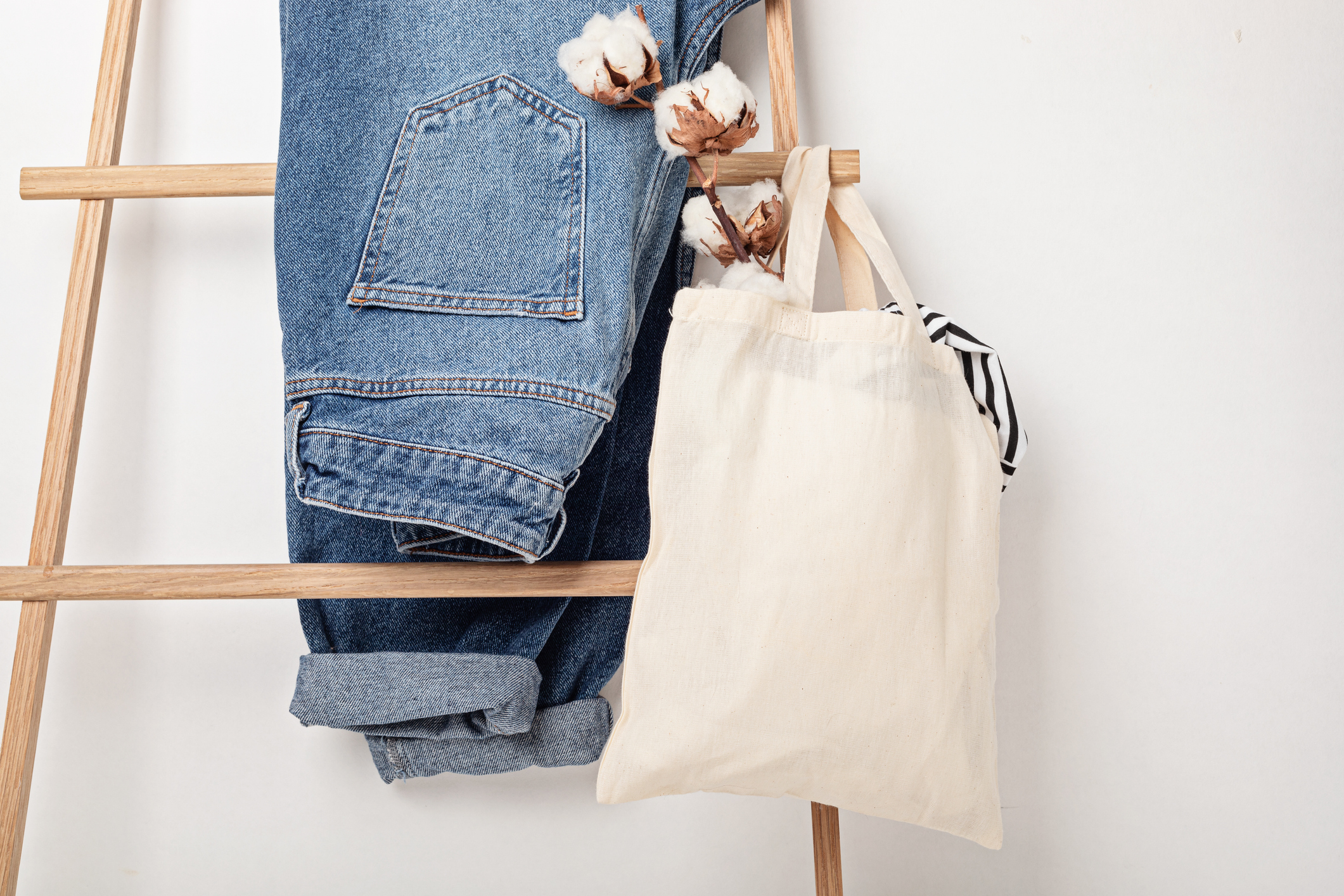While Earth Day was celebrated Tuesday, April 22, all of April is considered Earth Month. And as part of their commitment to the environment, fashion brands are making conscious material choices, as well as taking part in Earth Day and eco-conscious initiatives, which are especially meaningful to consumers looking to add more natural fibers to their wardrobes.
The most sustainable pieces in your closet are the ones that have been around the longest. The ones that last not just in quality, but in story, too. People’s style can change quickly, but values tend to stick around, and I want people to feel like what they’re wearing reflects what they care about.
Matt Moreau, Partner & Creative Director, The Landmark Project
Companies like The Landmark Project and Blue Revival have instituted initiatives – both for Earth Day as well as all year round – that contribute to environmental restoration while encouraging community involvement. This year, Blue Revival is donating 15 percent of all sales from its recycled denim collection to Trees for the Future, a nonprofit dedicated to global reforestation. And The Landmark Project announced it contributed an unprecedented $311,563 to various conservation and community initiatives, marking its most significant annual giveback since the program’s inception in 2018.
Both companies make a point of working with natural fibers. And that holds weight with today’s shoppers. Consider that the majority of consumers (71 percent) say they are likely to check the fiber content label before purchasing a clothing item to avoid apparel made from synthetic fibers, according to the 2025 Cotton Incorporated Lifestyle Monitor™ Survey. And about 3 in 10 shoppers (30 percent) are actually bothered that brands and retailers are using synthetic fibers in their clothing.
The Landmark Project’s Matt Moreau, partner and creative director, explained in an interview with the Lifestyle Monitor™ why the brand is so mindful regarding its fiber choices and production.
“It’s not just because it’s the right thing to do,” Moreau stated. “The whole point of what we make is to celebrate the natural world…Some of our tee styles also include recycled polyester, which gives new life plastic that would otherwise end up in landfills.”
The Earth Day organization estimates the fashion industry produces 100 billion garments a year, of which 87 percent will end up in an incinerator or landfill. It adds that just 1 percent of all discarded clothing is actually recycled.
Blue Revival’s Lindsay Steinberg, vice president of sales, says the brand has made conscious material choices in its collections, and that includes recycled materials. Steinberg told the Lifestyle Monitor™ in an interview that as the brand continues to grow, it has listened to consumers and understood the importance of creating pieces with the environment in mind.
“Our stretch denim is made of cotton and recycled plastic bottles, with each garment using 6 bottles removed from landfills,” Steinberg said. “Beyond our stretch denim, we use 100 percent cotton for all rigid styles – including the denim inserts in our Helen blazers. We want to be part of the solution and that’s why our Spring 2025 denim collection is recycled denim.”
Blue Revival’s latest offering is in line with consumer preferences: the majority (67 percent) say based on their denim jean buying and wearing experiences, jeans made of 100 percent cotton are the most sustainable or environmentally friendly, according to Monitor™ research.
And most consumers (65 percent) say they at least sometimes buy clothes made with recycled fibers in an effort to protect the environment, according to 2024 Monitor™ research. More than half (57 percent) say they at least sometimes look for clothes made with recycled fibers (like recycled polyester or recycled cotton) to help protect the environment.
Aiding the environment is why Blue Revival created its tie-in with Trees for the Future.
“As a New York-based brand, we understand the value of green spaces – our parks and tree-lined escapes offer essential moments of calm amidst the city’s energy,” Steinberg said. “Supporting this initiative felt like a meaningful way to give back, recognizing how vital trees are to the social, economic and environmental well-being of communities around the world. To date, Trees for the Future has planted over 370 million trees, helping restore ecosystems and uplift farming communities around the world.”
The Landmark Project is equally as committed to conservation, as well as ethical leadership. The brand’s donations include more than $221,000 to the U.S. Forest Service to bolster wildfire prevention education initiatives, nearly $29,000 to Leave No Trace to promote responsible outdoor ethics, and more than $14,000 to the National Forest Foundation to support the health and sustainability of national forests.
That’s why it tracks that The Landmark Project uses cotton in its apparel. The majority of consumers (67 percent) say they most associate cotton with being sustainable, according to the 2025 Monitor™ research. It’s trailed by bamboo/wood pulp/paper (19 percent), polyester (11 percent), and rayon/viscose/Tencel (3 percent).

Despite this consumer preference for natural fibers like cotton, a National Institute of Health study found that almost 70 percent of clothes in the fast fashion space are made with synthetics such as polyester, acrylic, and nylon, which come from petroleum.
With Earth Day in mind, Moreau says customers – especially the younger set who succumb to the lure of fast fashion haul videos – need to learn they don’t need a mountain of clothes to be excited by their wardrobe.
“You just need pieces that mean something and that actually last,” Moreau said. “I know fast fashion is tempting, but most of it ends up in the trash after a few wears. The most sustainable pieces in your closet are the ones that have been around the longest. The ones that last not just in quality, but in story, too. People’s style can change quickly, but values tend to stick around, and I want people to feel like what they’re wearing reflects what they care about.”
